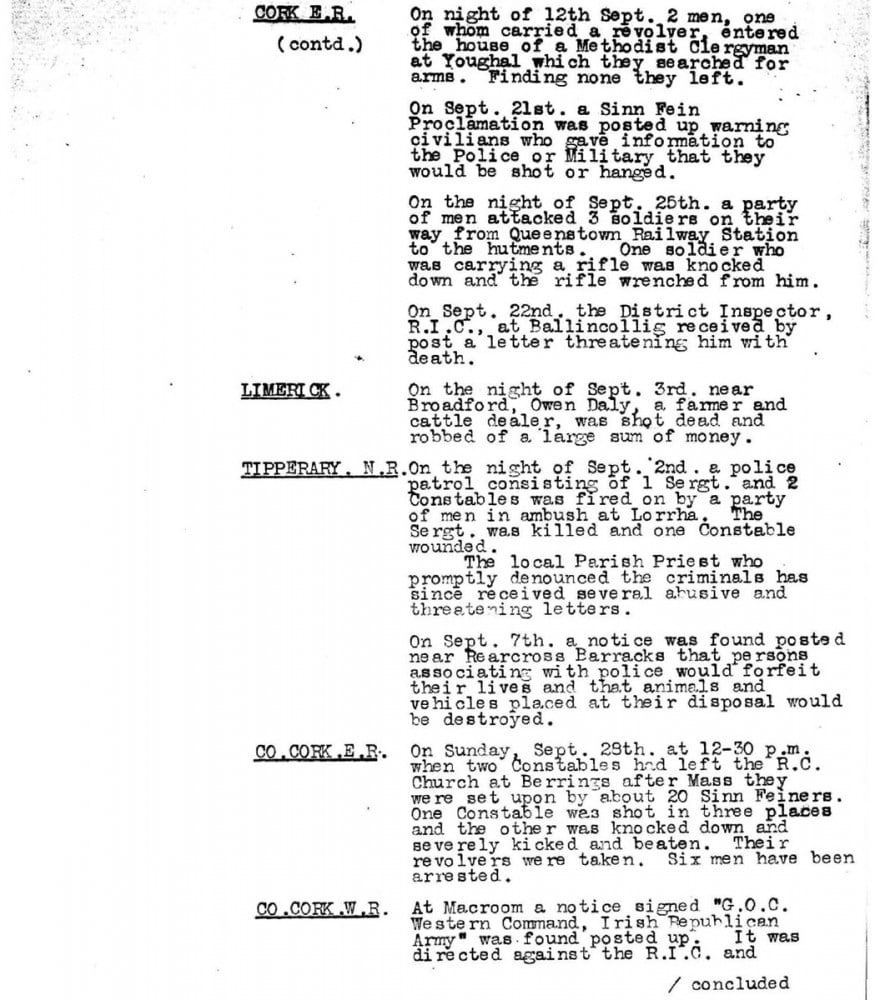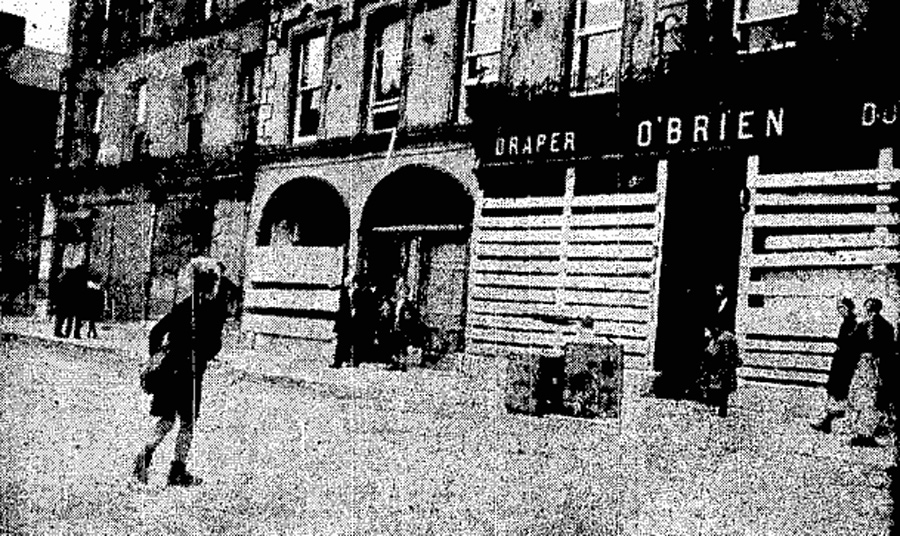Soldiers rampage through Fermoy in retaliation for church-door attack
Policeman shot in Tipperary
Fermoy, 10 September 1919 - Members of the British military rampaged through the town of Fermoy in Co. Cork on 8 September, destroying several properties.
Estimates as to the cost of the damage vary greatly – from hundreds of pounds up to £10,000. At a public meeting, subsequently held in the urban council chamber, Rev. John O’Donoghue said that the people had in no way provoked the military to wreck the town and if civilians had been present ‘lives would certainly have been lost’.
In response, military authorities committed to keeping their troops confined to barracks last night.
Attack on troops
The military rampage in Fermoy has been seen by some as
retaliation for an attack the previous day which left one soldier
dead and three others seriously wounded. A group of approximately
20 men attacked 18 rifle-carrying soldiers of the Shropshire Light
Infantry as they were about to enter the door of the methodist
church in Fermoy.
The attacking party arrived in three motor cars and opened fire with revolvers at close range, felling four soldiers, including Private Jones, who was killed instantly when a bullet entered his heart.
The attackers then overpowered the remainder of the soldiers and relieved them of their rifles, before escaping in their motor cars, heading in the direction of Waterford. When the police followed them they found the route out of the town blocked with trees.
The Irish Times has expressed outrage at the audacious nature of the attack which took place, it pointed out, ‘on the chief street of a populous lrish town, on a fine Sunday morning when all the bells were ringing for public worship.’
The paper described it as the ‘most daring and most deliberately planned outrage which has yet marked the new campaign of political crime in Ireland’.
‘It is obvious that the criminals either had friends and sympathisers in the district or counted, for their impunity, on a universal state of public terrorism.’
None of those involved in this attack have so far been apprehended.

Inspector General report condeming the attack in Lorrha. (Image: CO 904 110, National Archives UK)
Lorrha
A week before these incidents in Fermoy, on 2 September, there was
another attack on crown forces; Sgt Philip Brady of the RIC, was
shot and killed in Lorrha, Co. Tipperary. Constable Foley, who was
accompanying him, was badly wounded.
The Irish Independent has described the shootings in
Lorrha as ‘cold-blooded murder’ and echoed the words
of Cardinal Logue who has previously said that anyone who
committed such crimes is a greater enemy of Ireland than Lloyd
George or Bonar Law or Carson.
An inquest into the killing of Sgt Brady learned that the RIC man
had only arrived in the locality days before his death, having
been transferred from Enniskillen in Co. Fermanagh. Constable
Foley, who was also a stranger to the area, suffered injuries to
his arms and chest.
Although the police in North Tipperary are not rigidly boycotted, the public attitude towards them is said to be hostile and the motive for the Lorrha attack was political, according to one local policeman.
Sgt Brady is survived by his wife and six children.
[Editor's note: This is an article from Century Ireland, a fortnightly online newspaper, written from the perspective of a journalist 100 years ago, based on news reports of the time.]





















